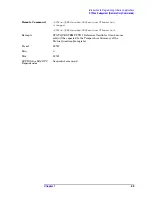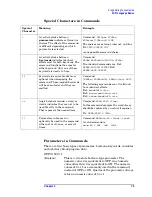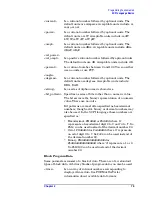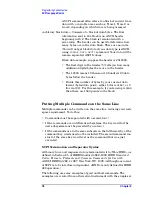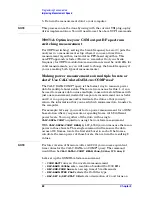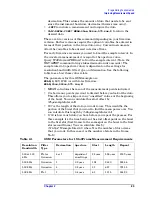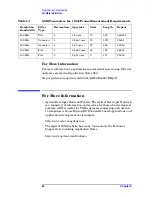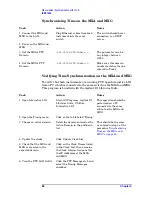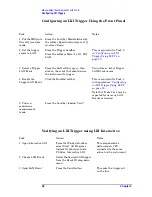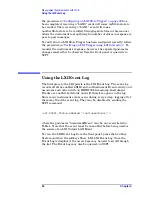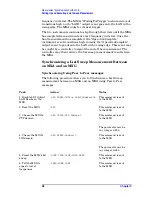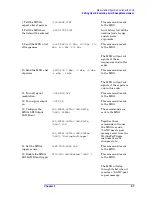
82
Chapter 2
Programming Fundamentals
Improving Measurement Speed
5. Return the measurement data to your computer.
NOTE
This process cannot be done by using with the current VXI plug-n-play
driver implementation. You will need to use the above SCPI commands.
N9071A: Optimize your GSM output RF spectrum
switching measurement
For ORFS (switching), setting the break frequency to zero (0) puts the
analyzer in a measurement setup where it can use a direct time
measurement algorithm, instead of an FFT-based algorithm. This
non-FFT approach is faster. (However, remember that your break
frequency for ORFS (modulation) measurements must be >400 kHz for
valid measurements, so you will need to change the break frequency if
you are making both types of measurements.)
Making power measurements on multiple bursts or
slots? Use CALCulate:DATA<n>:COMPress?
The CALC:DATA:COMP? query is the fastest way to measure power
data for multiple bursts/slots. There are two reasons for this: 1. it can
be used to measure data across multiple, consecutive slots/frames with
just one measurement, instead of a separate measurement on each slot,
and 2. it can pre-process and/or decimate the data so that you only
return the information that you need which minimizes data transfer to
the computer.
For example: let’s say you want to do a power measurement for a GSM
base station where you generate a repeating frame with 8 different
power levels. You can gather all the data with a single
CALC:DATA:COMP?
acquisition, using the waveform measurement.
With
CALC:DATA2:COMP? MEAN,9,197,1730
you can measure the mean
power in those bursts. This single command will measure the data
across all 8 frames, locate the first slot/burst in each of the frames,
calculate the mean power of those bursts, then return the resulting 8
values.
NOTE
For later version of firmware (after A.02.00) you can use equivalent
time values for the CALC:DATA<n>:COMP? query. The command
would then be
CALC:DATA2:COMP? MEAN,25us,526us,579.6us,8
Let’s set up the GSM Waveform measurement:
•
:CONF:WAV?
turns on the waveform measurement
•
:WAV:BAND 300khz
sets a resolution bandwidth of 300 kHz
•
:WAV:SWE:TIME 5ms
sets a sweep time of 5 milliseconds
•
:WAV:BAND:TYPE FLAT
selects the flat filter type
•
:WAV:DEC 4;DEC:STAT ON
selects a decimation of 4 and turns on


